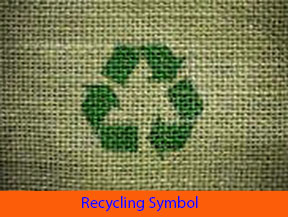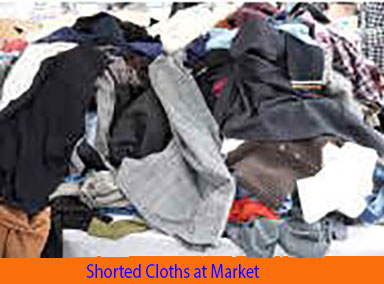What is Textile Recycling: Definition and Meaning
Last updated on June 24th, 2023 at 06:02 am
Definition of Recycling
Recycling can be defined as the process of reusing or making new products from the waste materials. It has many benefits. Such as, it reduces fresh raw materials consumption, energy consumption, air and water pollution and so on. By recycling, we can reduce the wastes and also reuse the product that has originally served its purpose.
Definition of Textile Recycling
We put our garments, curtains, pillow covers, bed sheets, towels etc. in our wardrobes or cupboards that we don’t need any more. Some of us pass them on Charity and re-use organizations and some reuse them.
Textile recycling is a system of reusing or reprocessing or remaking the used clothing, rugs, fibrous materials etc. We can also reuse or reprocess carpets, towels, tires, foot wears, sheets, blankets etc. Approximately, 1.5 millions of textiles that we can reuse or recycle are unnecessarily put into the rubbish bins.
Textile recyclers make the old clothing and fabrics into new products. The materials are sorted, cleaned and turned into new products. At first textile recyclers pre-short the materials according to composition, sizes, color etc. to separate any re-usable product and then sent for resale. As for example, in Toronto, collection boxes on street corners are operated by charities to collect the clothing and fabrics. Re-usable materials are sent to resale and the rests are to recycle. Now a day, famous retailers like H & M, American Eagle, Marks and Spencer also accept textiles for reuse and recycling.
Importance
The importance of Textile Recycling are as follows –
- It reduces wastes and also landfill space.
- It reduces the greenhouse gases as when the textiles are burnt gases are produced.
- It reduces air and water pollution.
- It reduces energy consumption.
- It reduces use of fresh raw materials.
- It creates economic development.
- It helps to reduce unemployment problem.
Procedures
The procedures are as follows –
For reusable Textiles
At first the Textiles are carried by trucks to the shorting plants. Then these are shorted by types (Tops, bottoms, T-shirt, denim etc.). These are also shorted by quality and brands. The high qualities are sent to the local market again. Like as in America, these are sent to the North American vintage shops. Then the lower qualities are compressed and bundled. The bundles are arranged in the shipping containers and sent all over the world for resale.
For unusable Textiles
At first the textiles are shorted according to the origin. They are separated as natural and synthetic fibres.
In case of natural fibres – First these are shorted according to the type of material and color. Color shorting reduces the dyeing cost of the fabrics. Then the textiles are shredded and converted into fibres. The fibres are then made into yarns and the yarns into fabrics. Sometimes some fibres are also used for other purposes like filling pillows.
In case of synthetic fibres – The textiles are shredded and processed into chips. Then the chips are used to produce synthetic filaments or yarns.
- https://en.wikipedia.org/wiki/Textile_recycling
- http://www.recyclenow.com/what-to-do-with/clothing-textiles
- http://atrscorp.com/







this piece of article was really helpful..thank you so much.
Thanks for your comment.
Really helpful.
👍👍👍very informative
Thanks.
Thank you for such valuable information